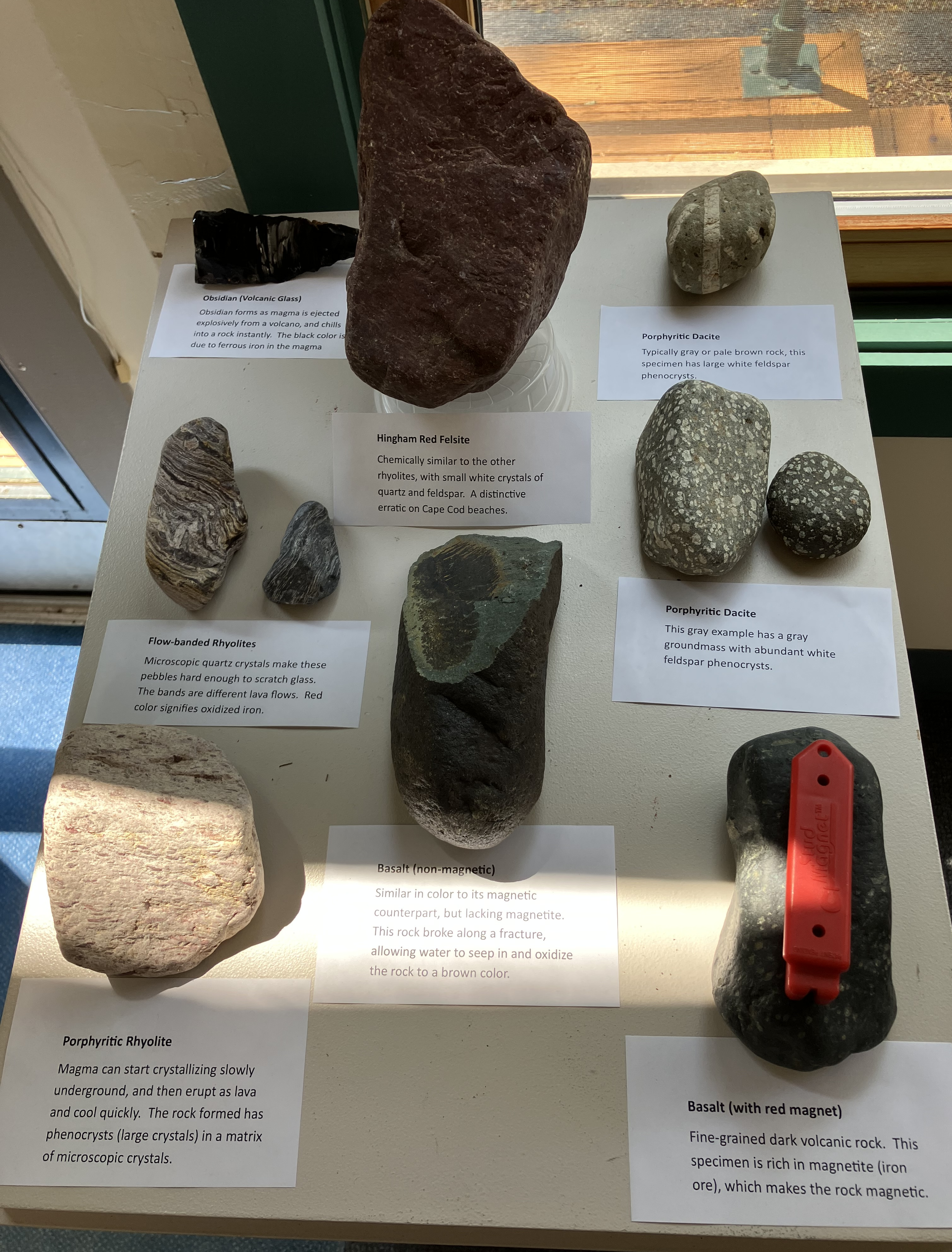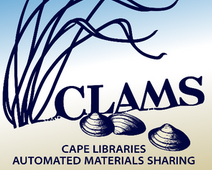MAY & JUNE
This month’s display features rocks and minerals crystallized from melts (magma) that cooled and solidified at depths of a few tens to several hundred kilometers below the Earth’s surface. The hot magma bodies are less dense than the enclosing older rocks and thus rise through the latter until solidifying as plutons, which consist of granites and other rock types. Plutons vary in size from 10’s to 100’s of square kilometers, known as stocks, to many 1,000’s of square kilometers, known as batholiths.
Intrusive igneous rocks crystallize slowly over hundreds to thousands of years or more, which allows large crystals to form. The minerals that make igneous rocks reflect the chemical composition of the magma, which is commonly rich in silicon, aluminum, iron, calcium, magnesium sodium and potassium, plus other trace elements, as well as gases such as carbon dioxide, fluorine and water vapor.
All the specimens in this exhibit were transported to Wellfleet by glaciers, except as noted in the rock descriptions. The large sheet of mica was likely mined from a pegmatite, which formed very slowly from a granitic magma rich in water and gases. Pegmatites are common in New England and historically were mined for mica used as a heat-resistant glass in ovens. During the cold war, pegmatites were mined for the mineral spodumene (LiAlSi2O6), an ore of lithium. Lithium has two stable isotopes, lithium-6 and lithium-7, and the lighter isotope, lithium-6, is used as a fusion fuel in hydrogen bombs. Non-military uses for lithium include batteries for electronic devices, electric vehicles, and some non-rechargeable batteries.
Questions or comments? Email Bob Stewart – iceagestewart@gmail.com






































